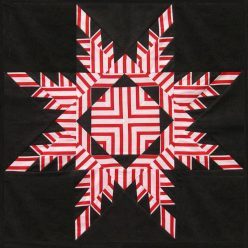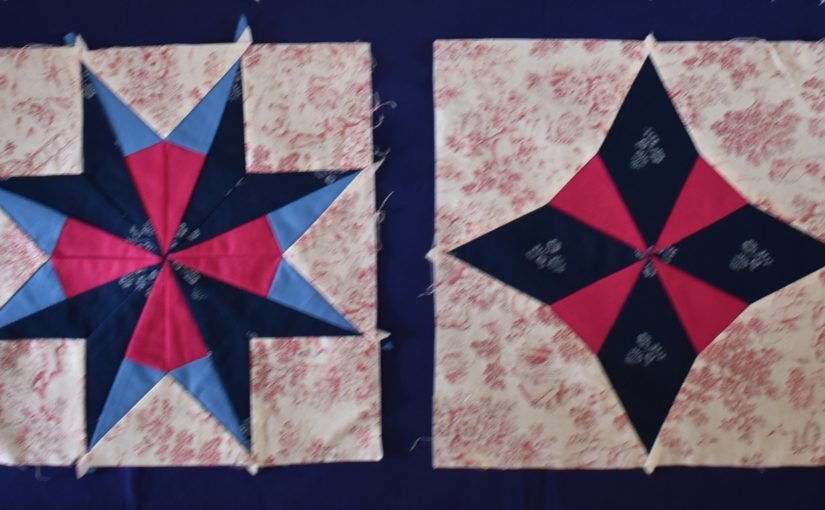A “Sampler Quilt” is one which has many different blocks, usually separated by sashing strips.
They are very popular with those who like to experiment (or get bored easily), as you only do each block once, and can have a lot of fun trying out something new. Often, they are provided in a “Block of the Month” format. Although sometimes this includes fabric, most people like to make their own choice of colours.
Sampler Quilts are also a great learning tool. Often suggested for beginners, they also make really good projects for more experienced quilters, as there are plenty of more challenging blocks as well as the usual straightforward ones. You can try out new methods, techniques and colour combinations, which will help you to discover which you really like, and want to do more of. If there is a block which you hate, or which proves too difficult – just leave that one out, and replace with another – and you haven’t wasted a lot of fabric.
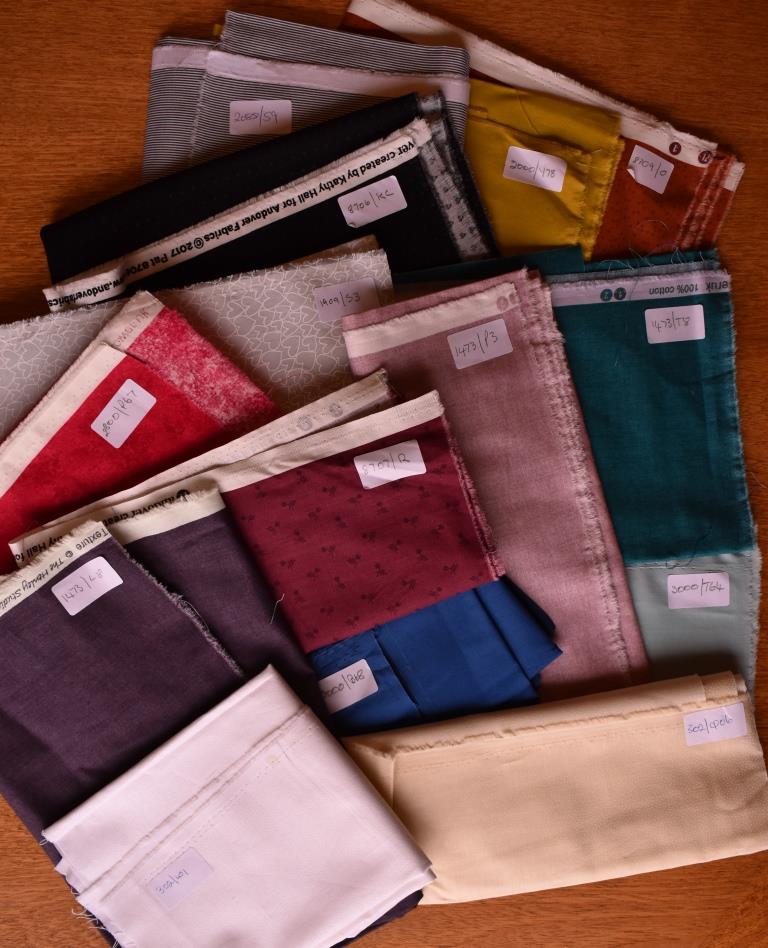
I was given the opportunity to try out some of the wide range of plain and semi-plain fabrics made by Makower from their Essentials, Spectrum Solids, Spraytime, Linen Texture, PinStripe and Bijoux ranges.
They include a huge variety of colours, and as solids and subtle textures don’t go out of fashion quickly, they are so useful to keep in stock.
I decided to make a selection of Star blocks suitable for a Sampler Quilt to share with you – and to make it accessible for you whatever your skill level, they will focus on different techniques, and offer a mixture of easy and more challenging blocks. Full instructions for these “Skilful Skyful” blocks are now starting to be available by download from my online Shop .
Choosing fabrics
So, how would you go about choosing fabrics for a Sampler Quilt?
There are three broad styles which you could consider:
- Same fabrics throughout
- Completely random fabrics
- Controlled colour palette
I’ll talk through the problems and advantages of each, illustrating this with previous projects:
1. Same fabrics throughout.
This is what I did in my Provencal Sampler Quilt. It gives a coherent overall look, despite the different blocks.
I chose three fabrics – a Dark blue patterned, a Medium blue plain and a Light flowery fabric.
These were used in every block, with the Light as the background, the Dark as the main focus, and the Medium as a contrast to both.
The sashing and border fabric was then chosen to complement them.
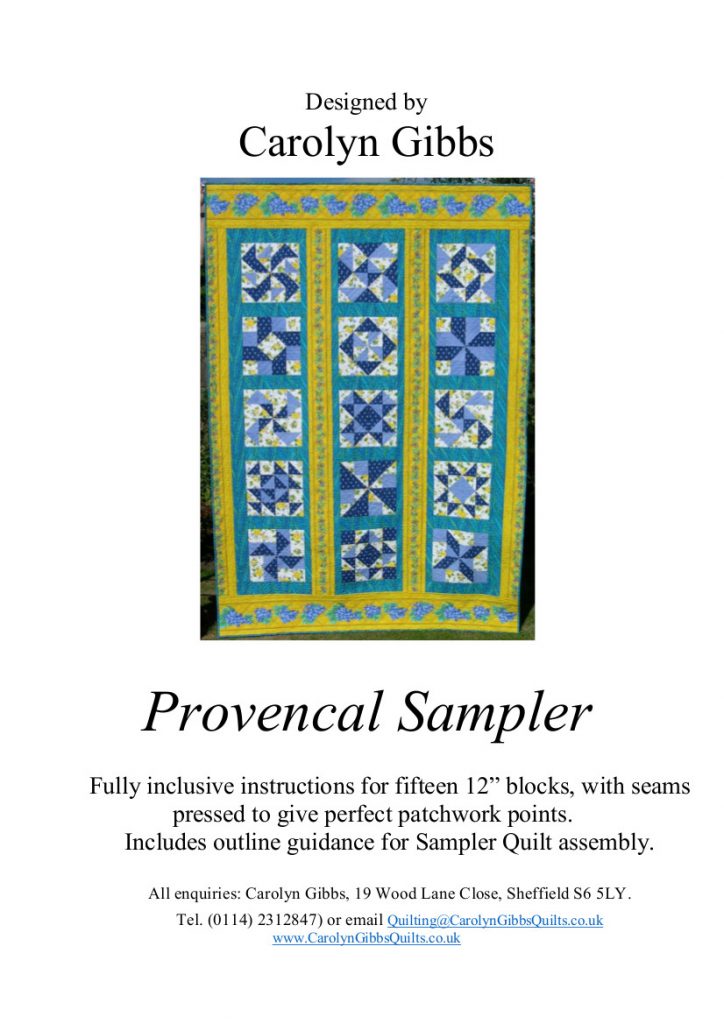
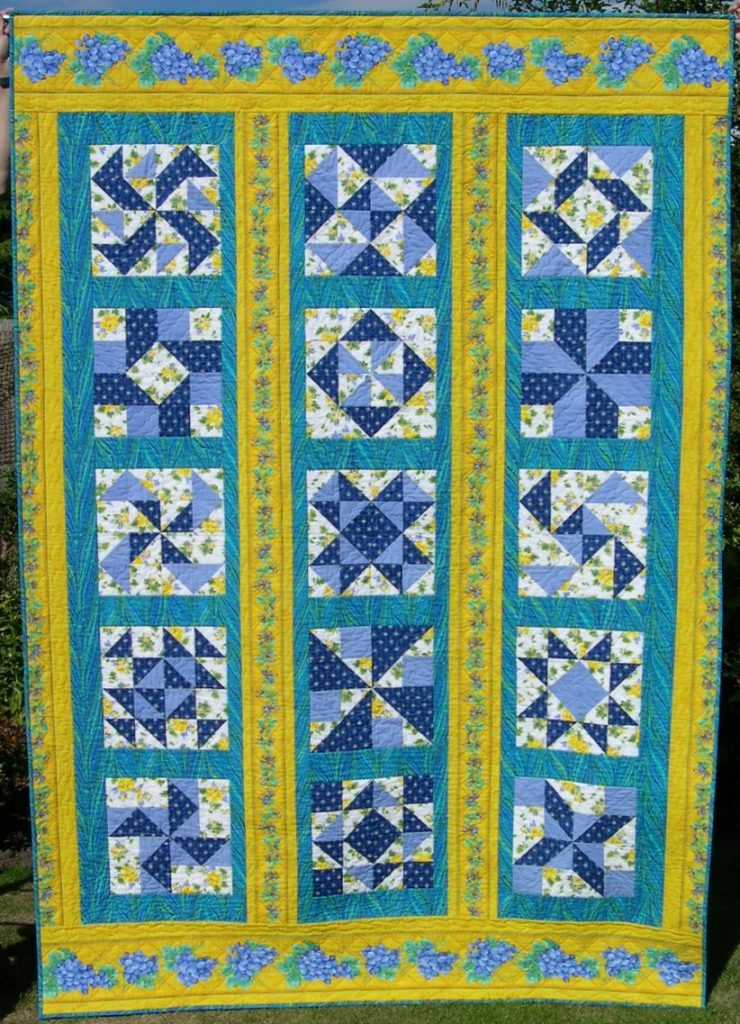
The Provencal Sampler pattern (available in the online Shop for £8) just refers to Dark, Medium and Light.
This allows you to choose any three contrasting fabrics in a colour scheme of your choice – the pattern gives the quantities needed. This means that you probably need to buy the fabric specially, but you won’t waste much.
If you are not confident choosing fabrics, have a look at my Techniques page about Colour and Contrast, which should be helpful. There is a free download available too.
I have made another Sampler Quilt which also uses consistent fabrics throughout.
There are three fabrics: Dark (the brown giraffe print), Medium (the orange) & Light (the beige) which appear in every block:
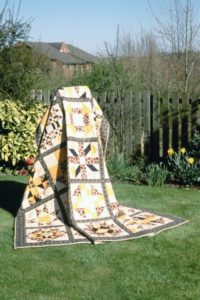
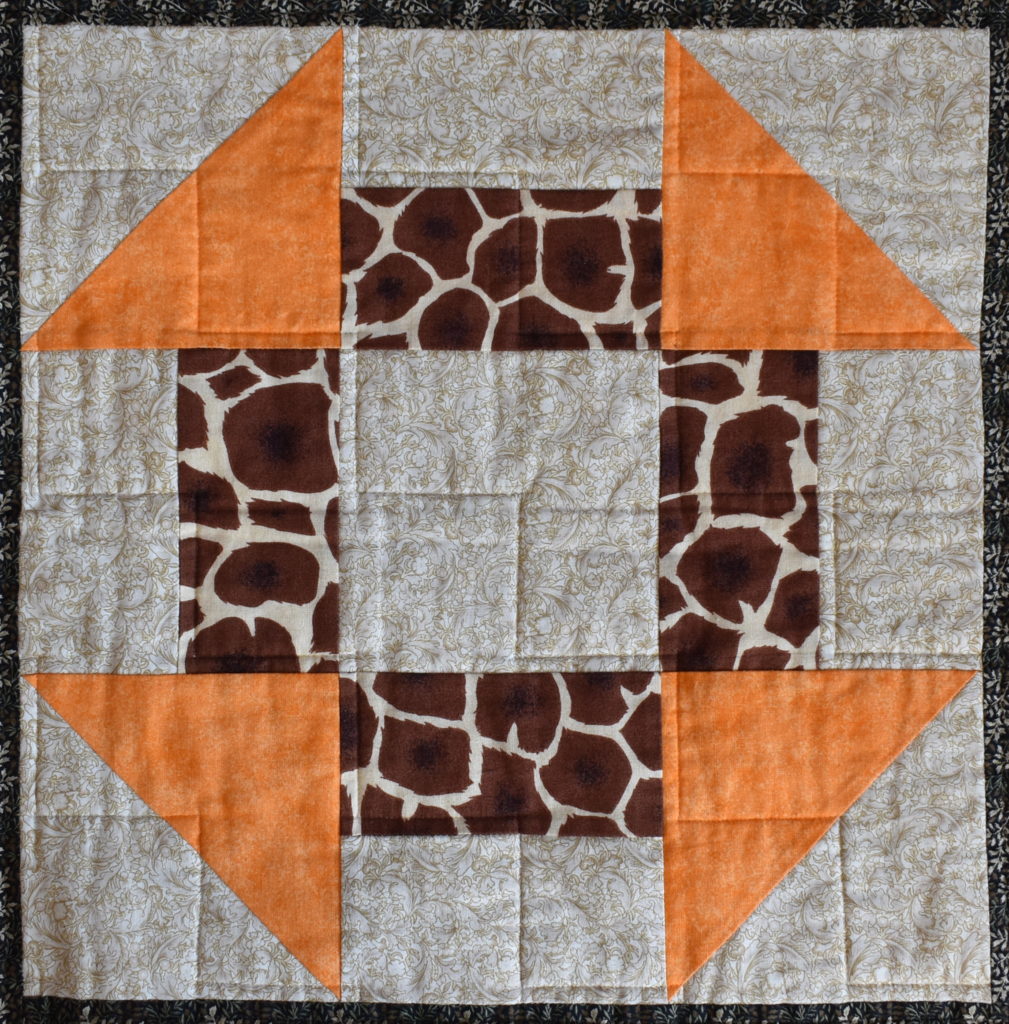
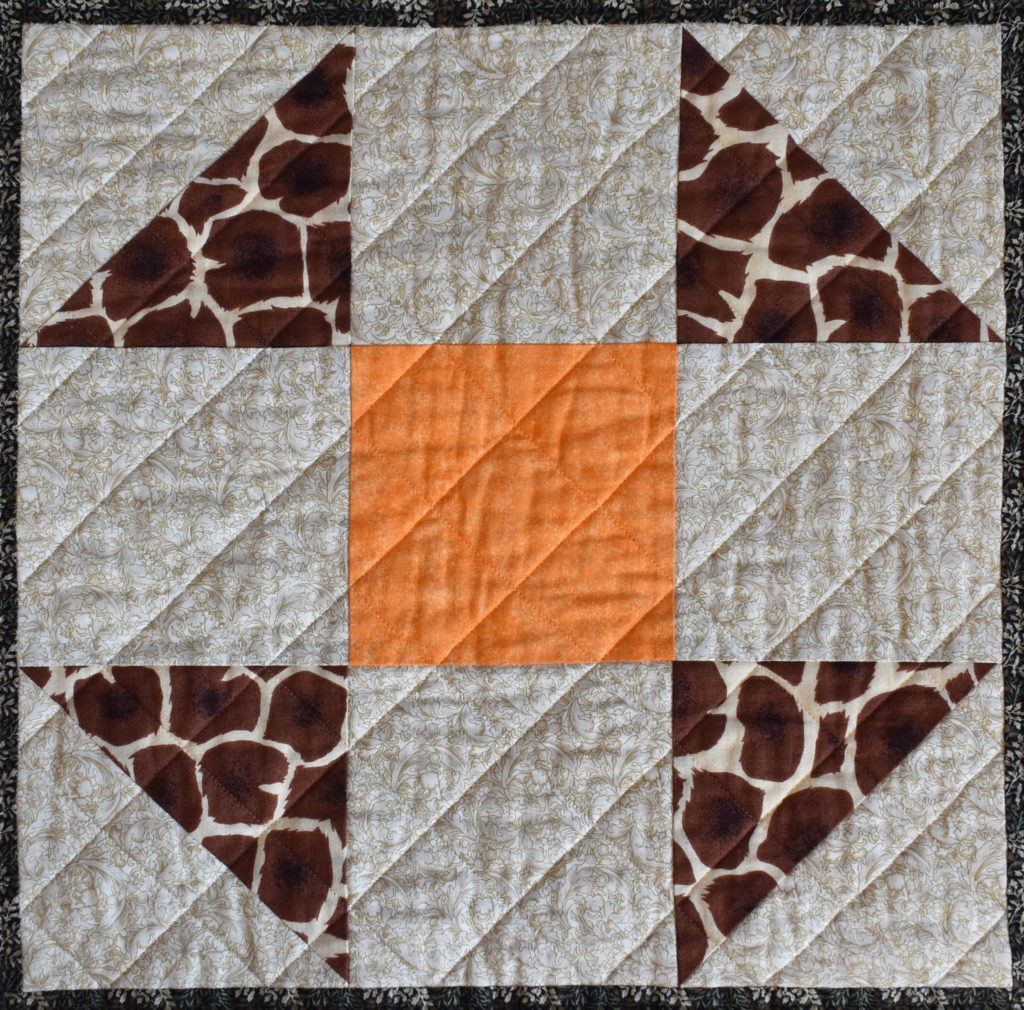
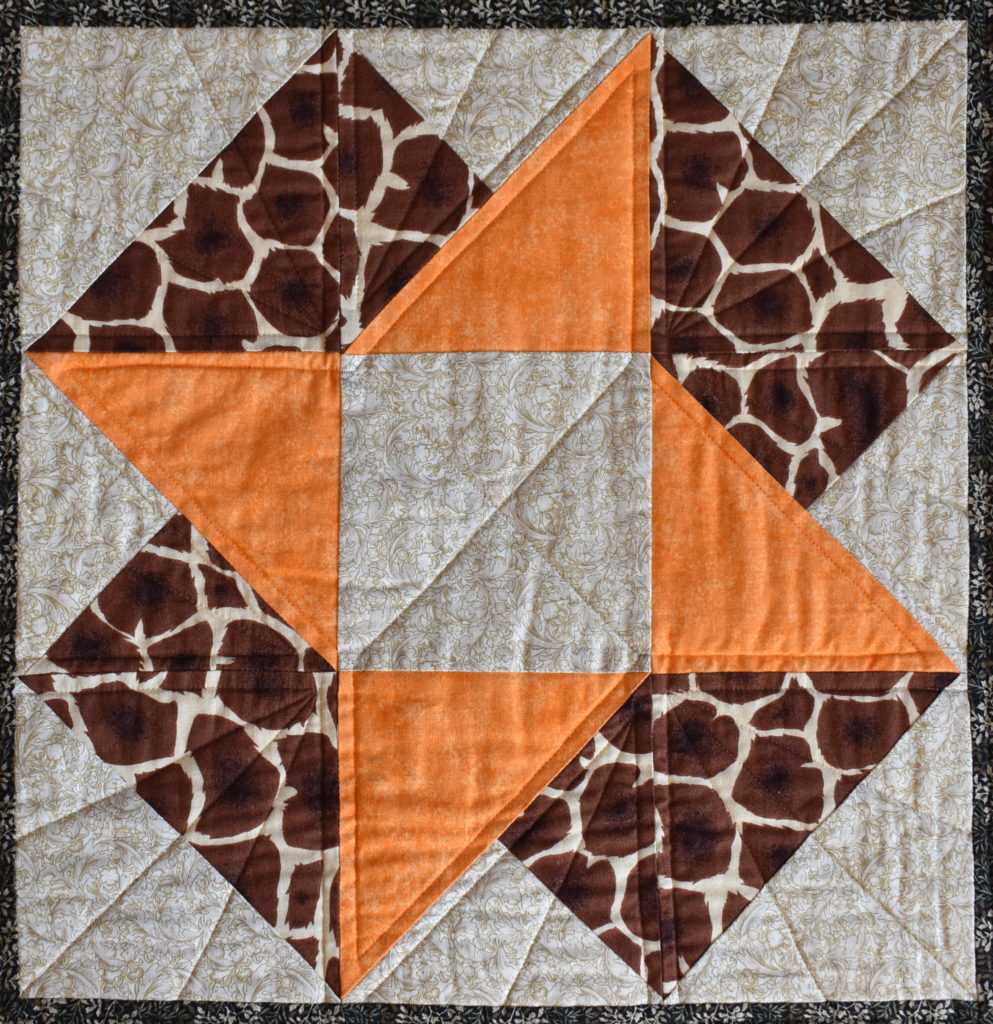
There are also two extra fabrics: Very Dark (the black) & Medium Pale (the pale leafy brown) which appear in half the blocks.
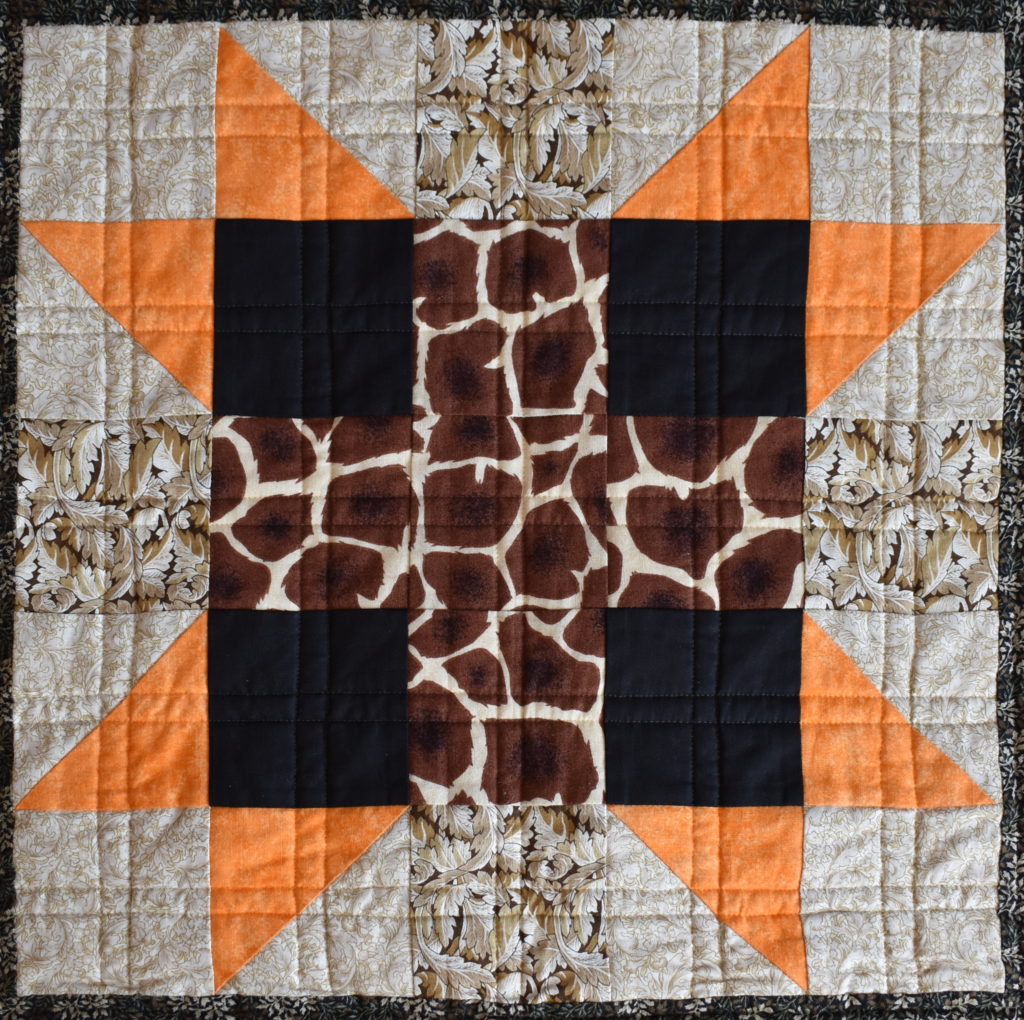
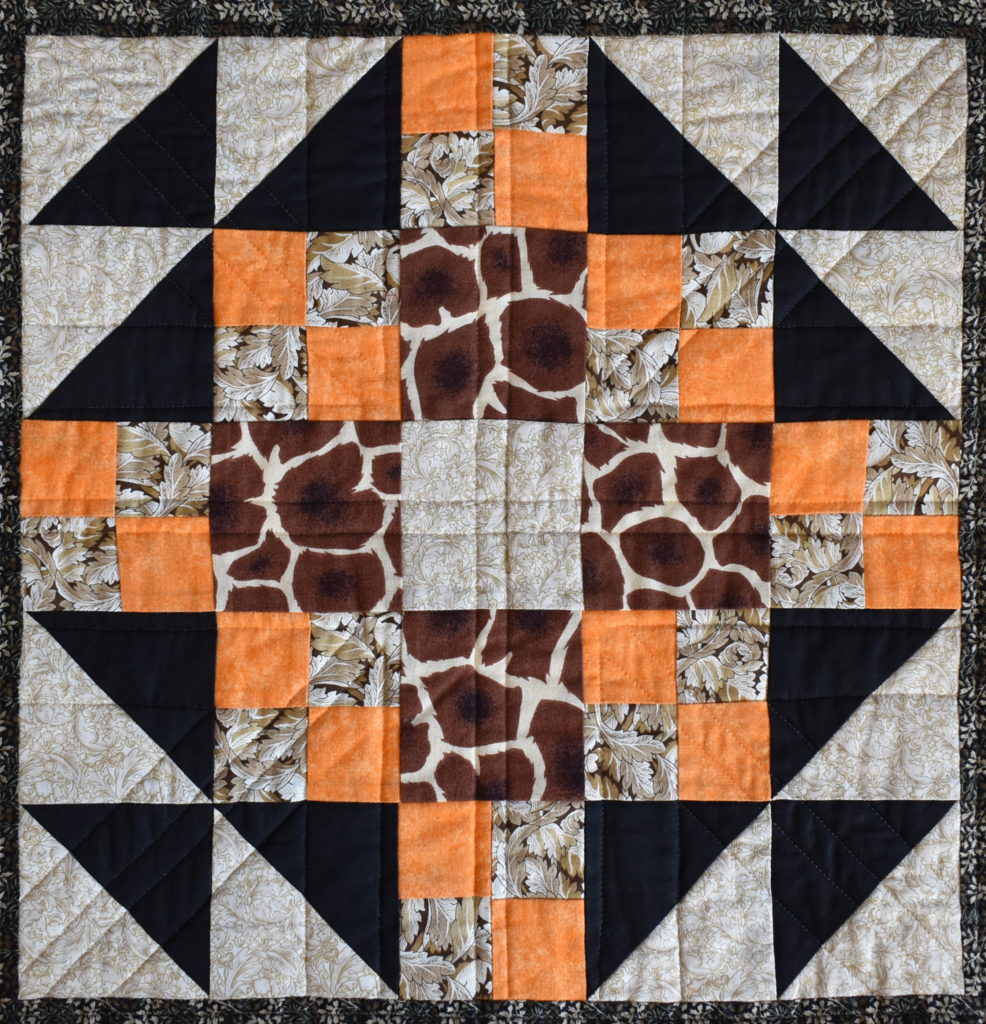
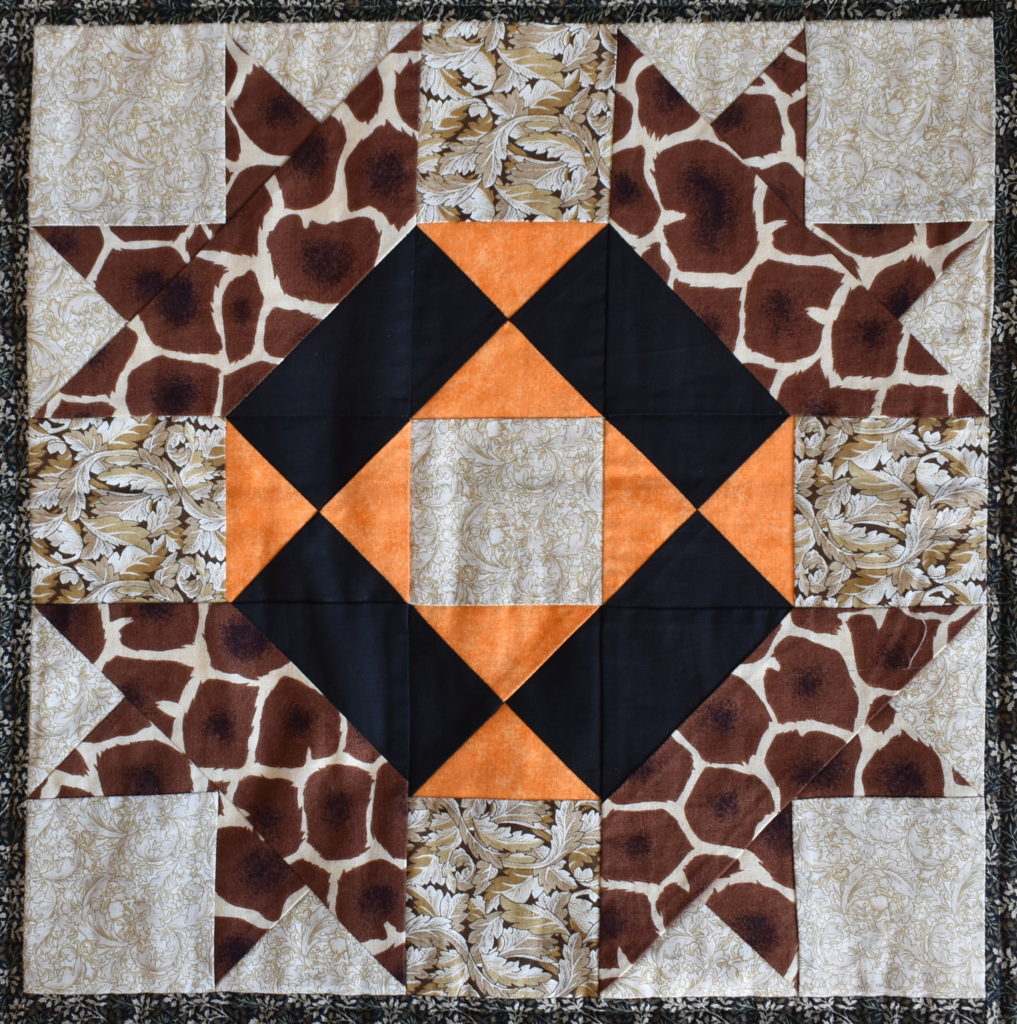
Again, all the blocks have the same background fabric, to give a consistent approach. This also makes it easier to find a single sashing fabric which frames them all.
In another project, I am making hand-pieced blocks using Swiss cottons – again using the same fabrics each time
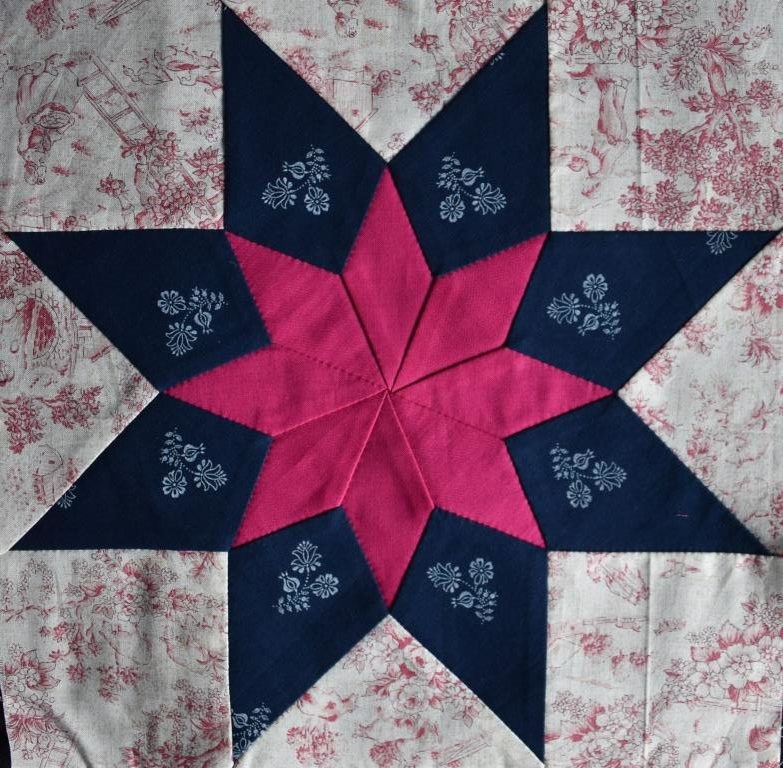
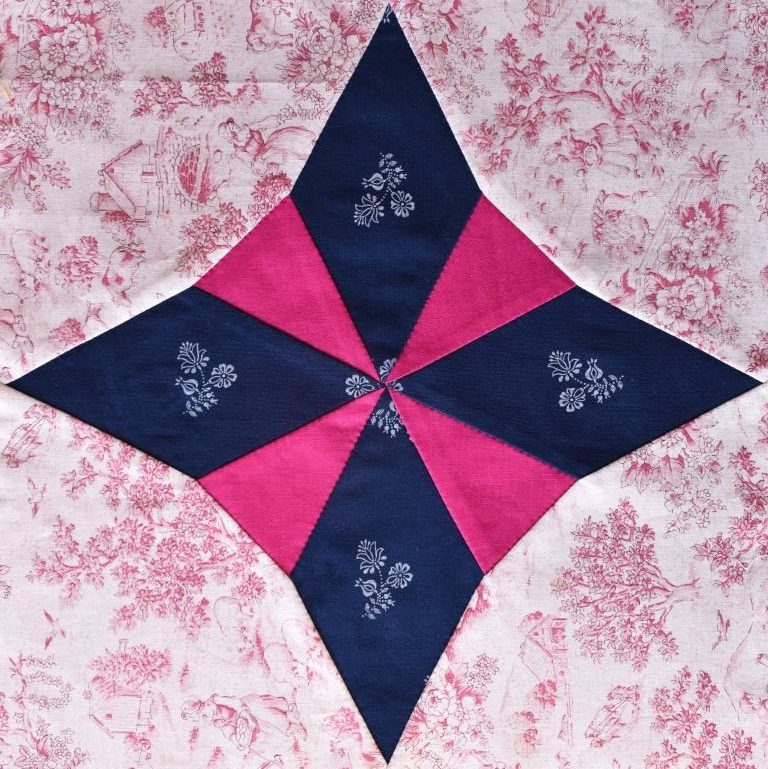
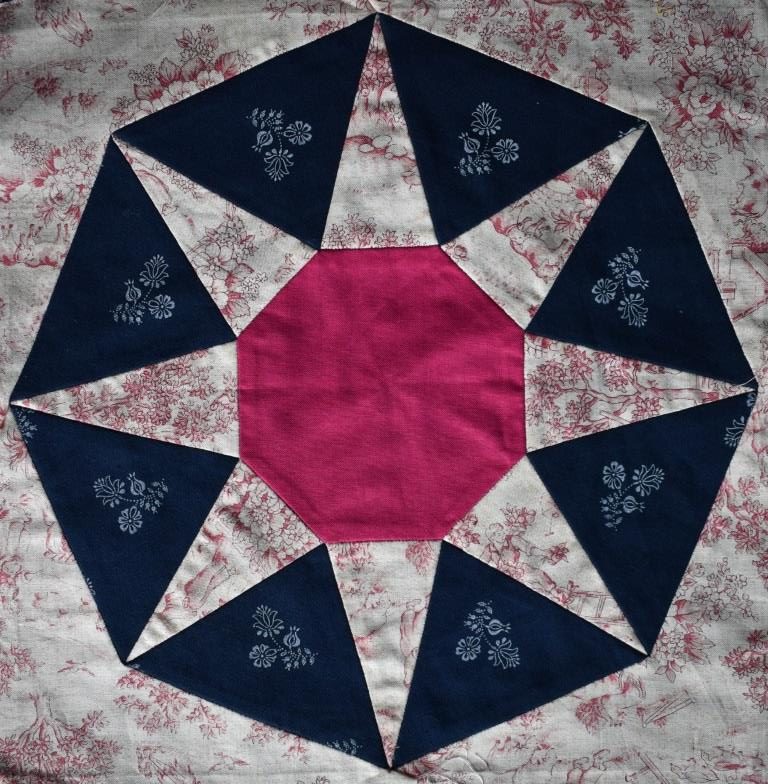
2. Completely random fabrics
In contrast, you will see many sampler quilts made with a huge variety of fabrics which have been selected with no planning – indeed people are sometimes advised to just put together any sample blocks they have made, or to use up leftover scraps.
As an experiment, I laid out a selection of my orphan blocks to illustrate what they would look like………..
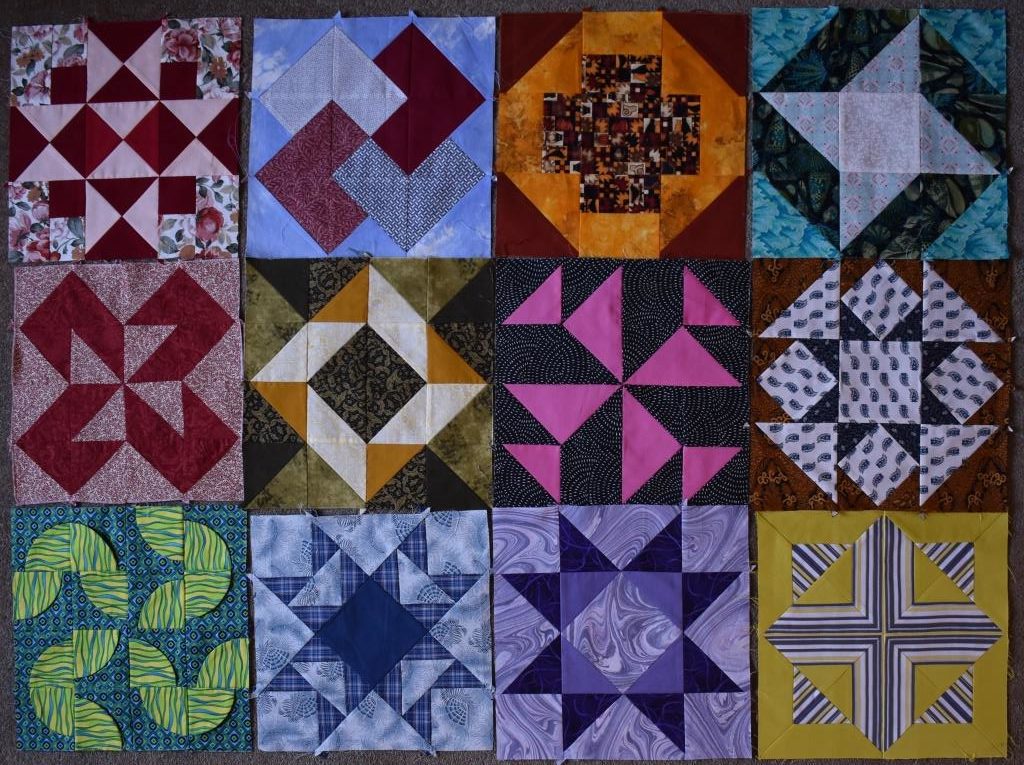
Personally, I don’t like this. Although each block is pleasing individually, I just don’t think they work together. Some are bright, some are more subdued, and there are so many colours which don’t all go together. And it would be really difficult to pick a sashing fabric which supported the range of background colours equally.
Although some quilters succeed in making spectacular quilts this way, I have also seen many which are far less successful. It needs a really good eye for colour and value to make this work. I am a bit of a control freak, so a bit more pre-planning works better for me. However, some of you will think this effect is lovely – so if you do, go ahead! It’s your quilt, so do what suits you.
3. Controlled colour palette
For this option, you need to choose a larger number of fabrics within a defined colour family, which all work together. Then you can pick a slightly different selection for each block. It is still important to select a range of value (Light Medium and Dark), and to have an overall “feel” to give it consistency, as with planning any scrap quilt. See the Scrap Quilt section of my Colour and Contrast advice in the Techniques section of this website for guidance on this.
This is what I have decided to do with my Makower sample fabrics. I have a “Pink” set and a “Blue set, both of which range from Light to Dark, together with some neutrals and a contrast (mustard) which work with either (see photo near the top of this page, and compare it to the “sorted” version below).
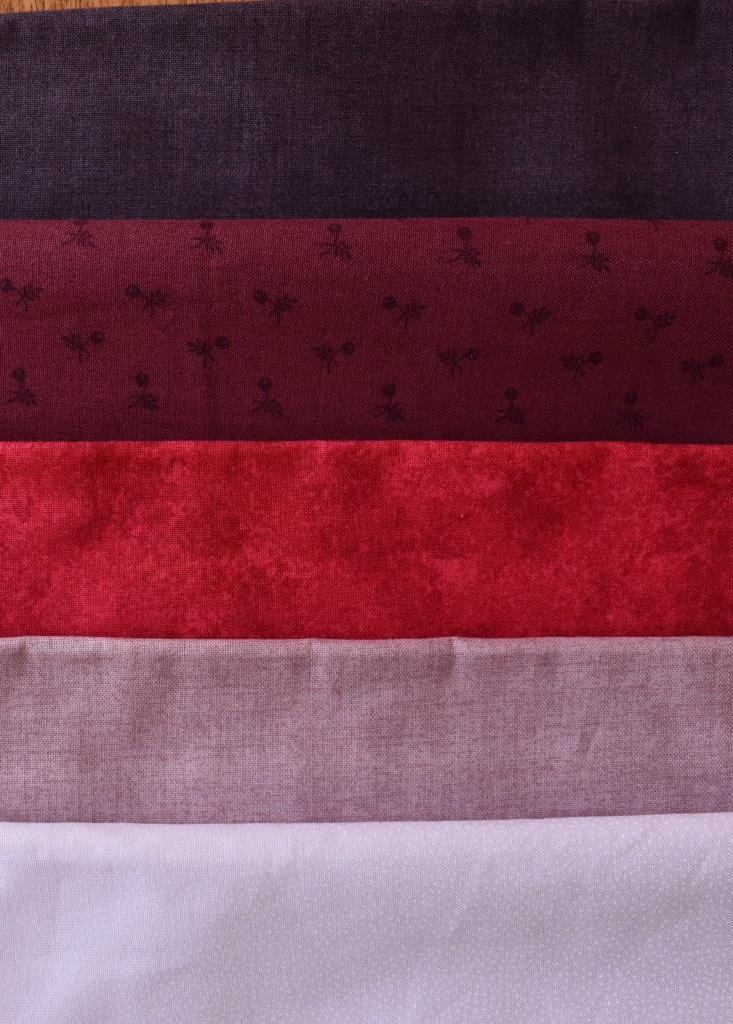
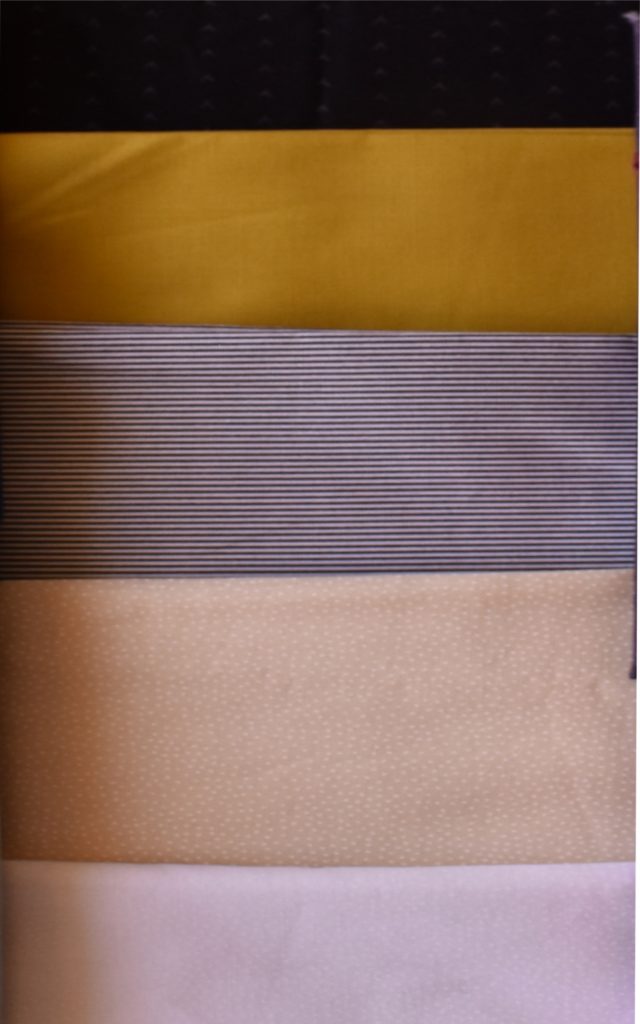
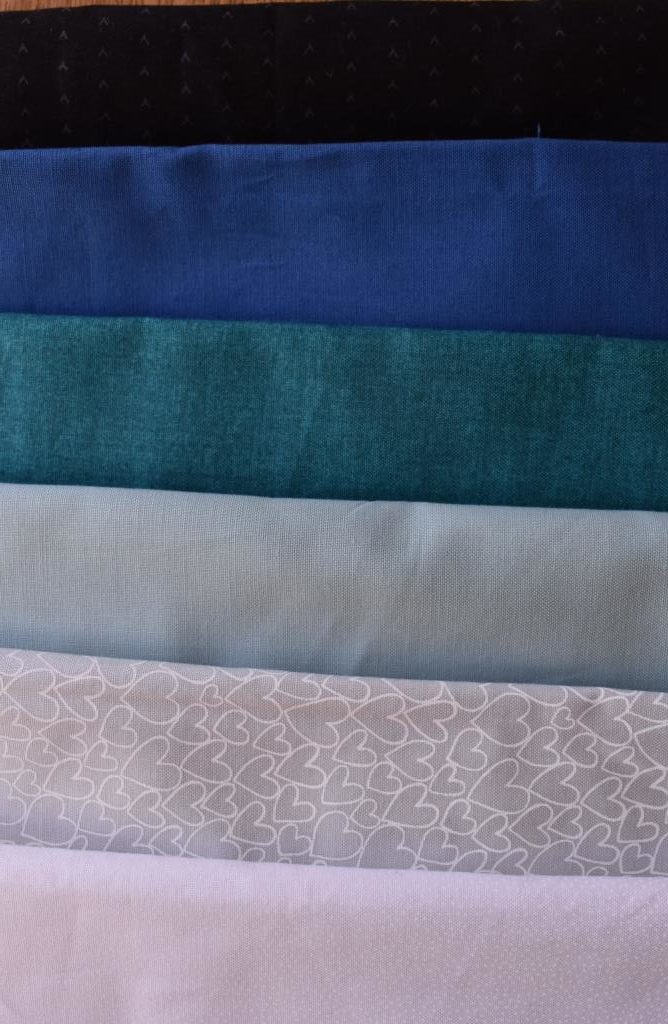
I chose them from online colour charts, and most of the colours came as I expected- apart from the blue (second down on left: Spectrum Solids ‘Ocean’), which I had expected to be darker, and the Raspberry Spraytime (third down on the right), which was surprisingly bright. Choosing online gives access to the a much wider colour range, but there are advantages to choosing in person if you can – maybe buy interesting colours of semi-solid basics like these for your stash when you see them, preferably picking Fat Quarters with the fabric name and reference written on the selvedge so that you could get more if necessary. Look out for very dark and very light colours in particular – neither look very interesting by themselves, but throw other fabrics into contrast, showing them to their full advantage.
Here is a taster of some of the blocks that will be in the Skillful Skyful series, to give you an idea of how these fabrics will work together:
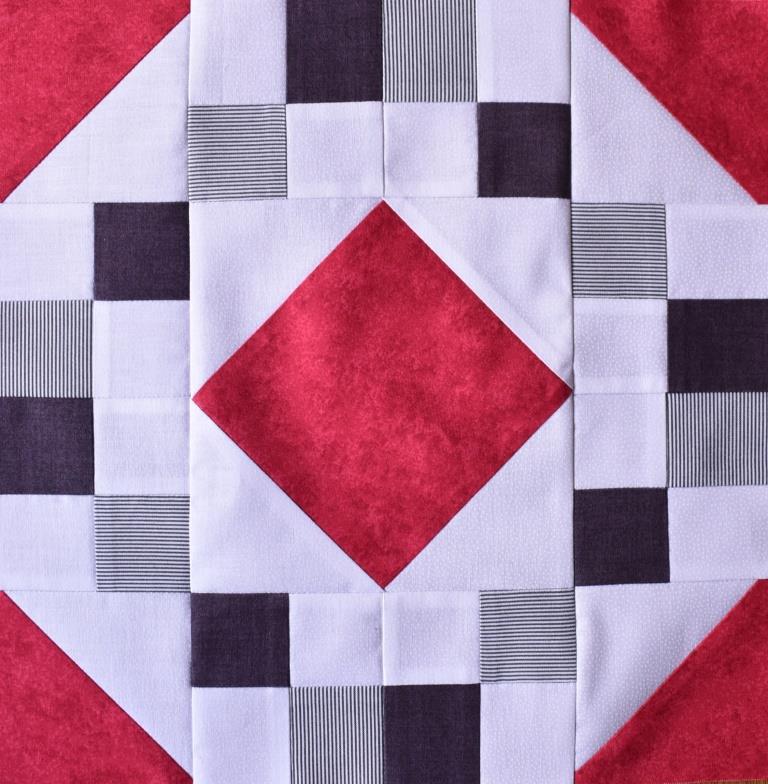
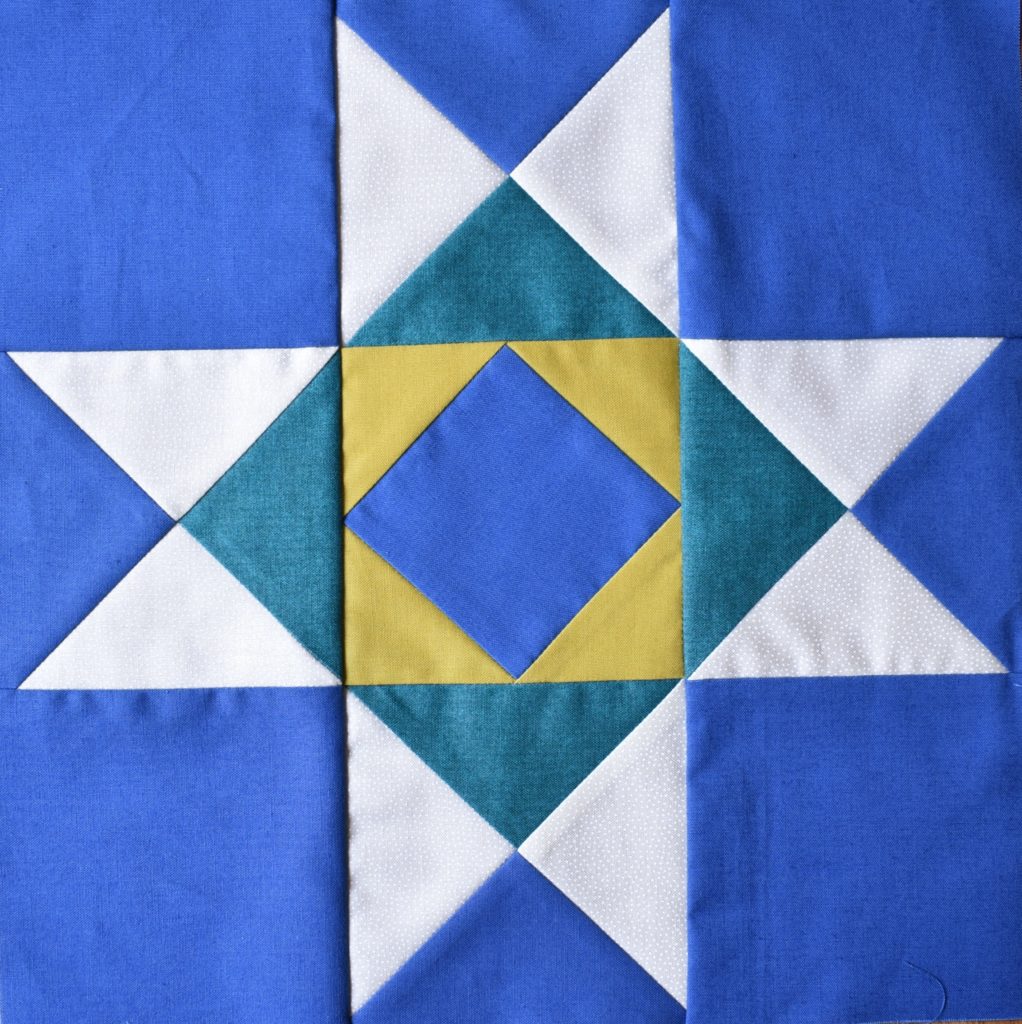
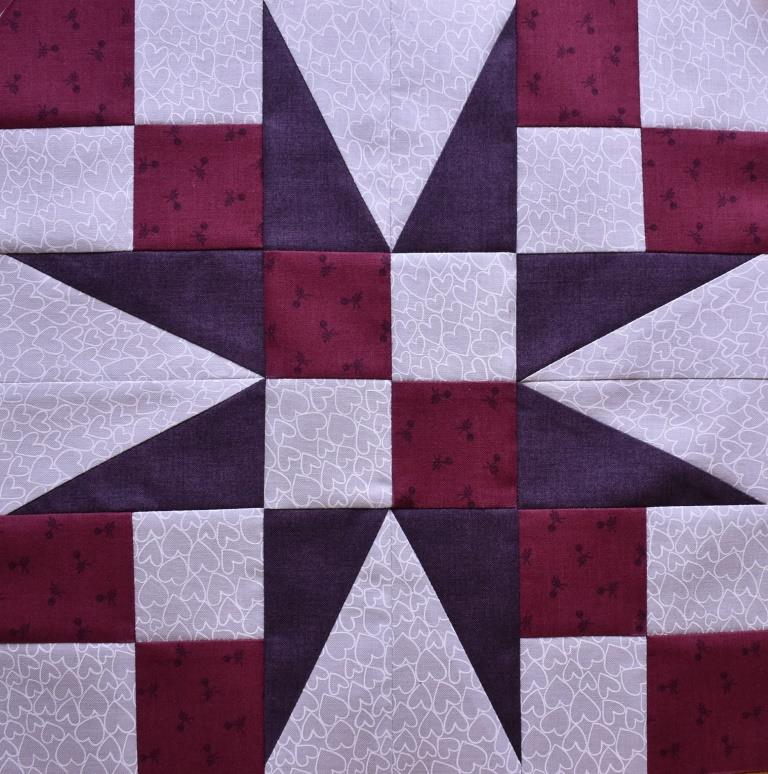
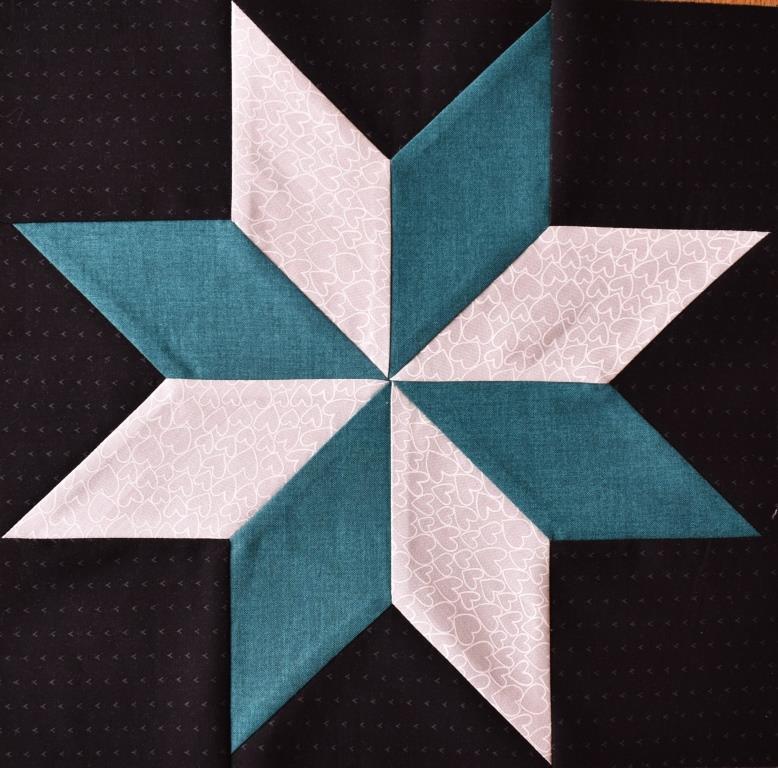
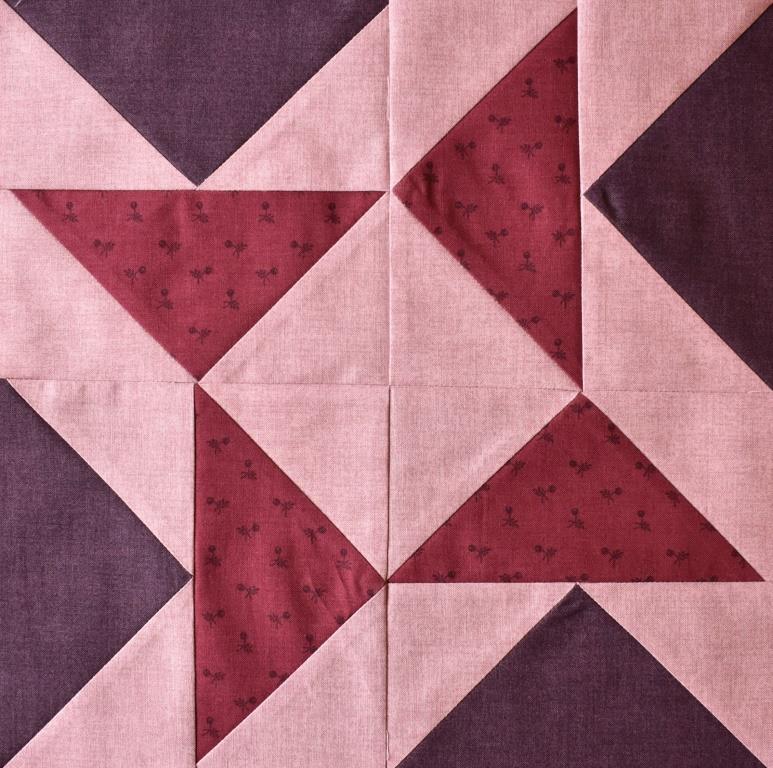
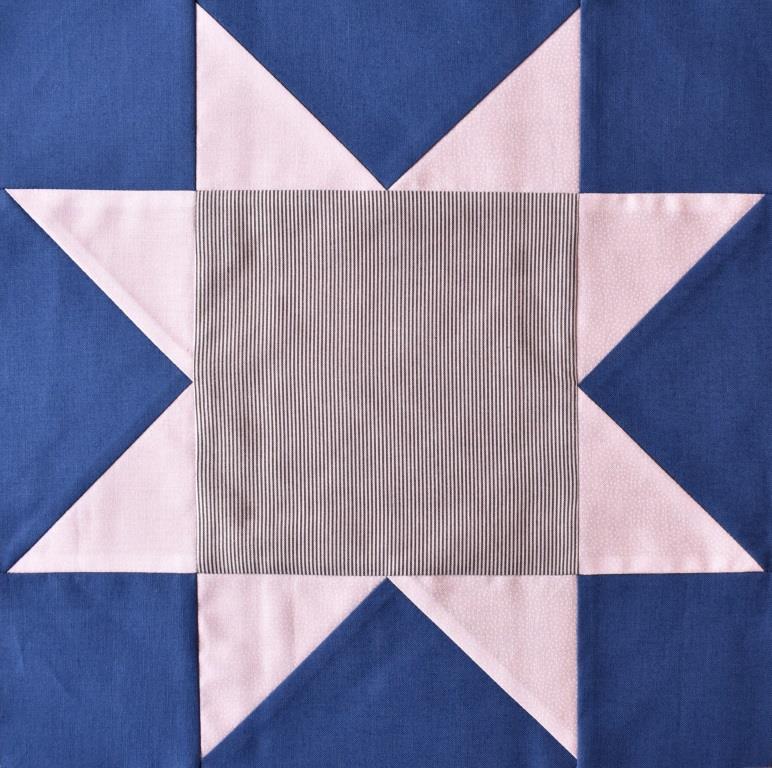
How did I choose which blocks to make? You can read about that on this webpage Planning a Sampler Quilt Part 2: Blocks
Click here to go to Skilful Skyful
